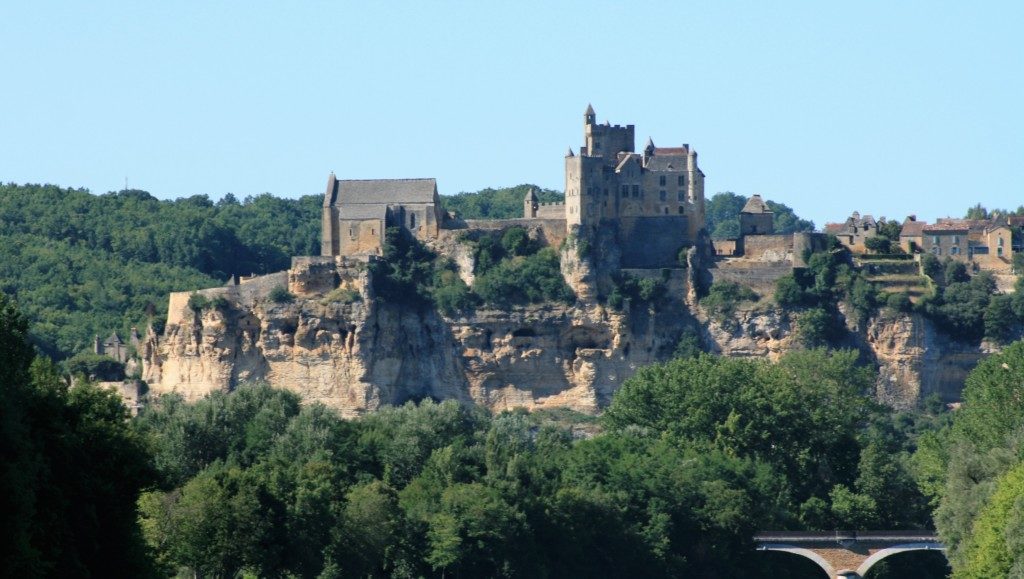
Chateaux in the Dordogne
Chateaux and Castles to Visit in the Dordogne
The Dordogne region is renowned for its over 1000 chateaux and castles, ranging from formidable fortresses linked to the 100 Years War to grand stately homes. These chateaux are famous across France, and it is highly recommended to visit multiple chateaux in the Dordogne, as each offers a unique experience.
Chateaux and Castles to Visit in the Dordogne
In particular, the Dordogne Valley is often called the ‘Valley of the 5 Chateaux’ or the ‘Valley of the 5 Castles’ due to the presence of five historically significant chateaux dating back to the 100 Years War. Among these, Chateau Beynac and Chateau Castelnaud stand out as the most impressive and are considered the most visited chateaux in France.
Together, they form the distinctive group known as the five chateaux.
Le Chateau de Castelnaud | Castelnaud Dordogne
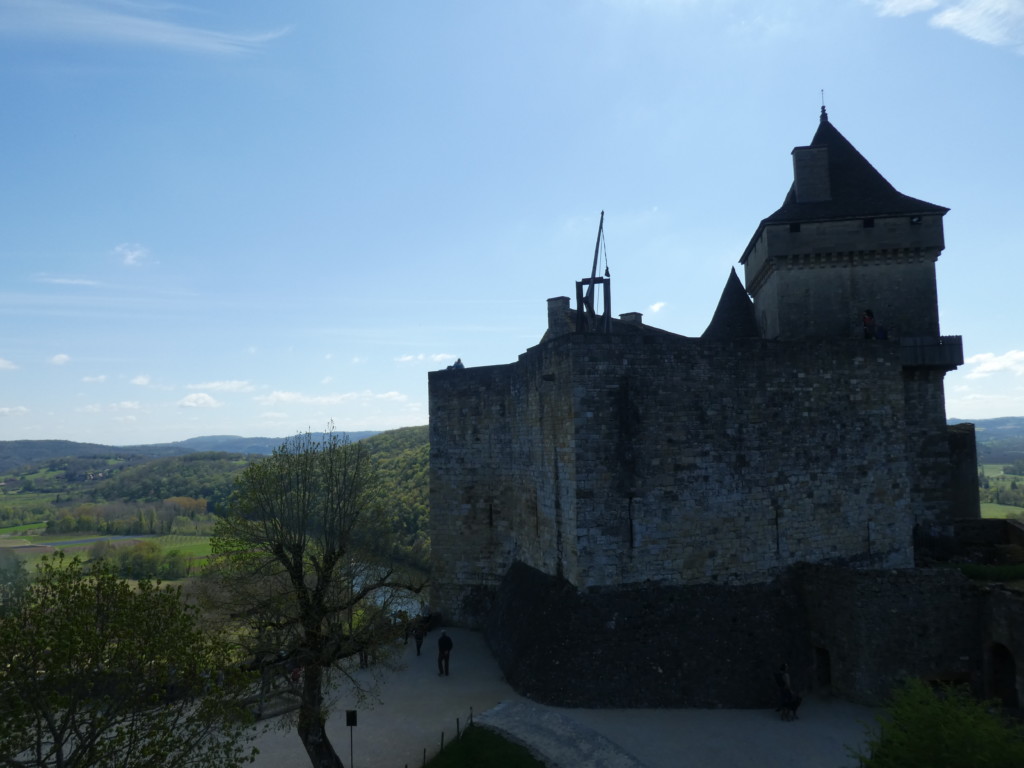
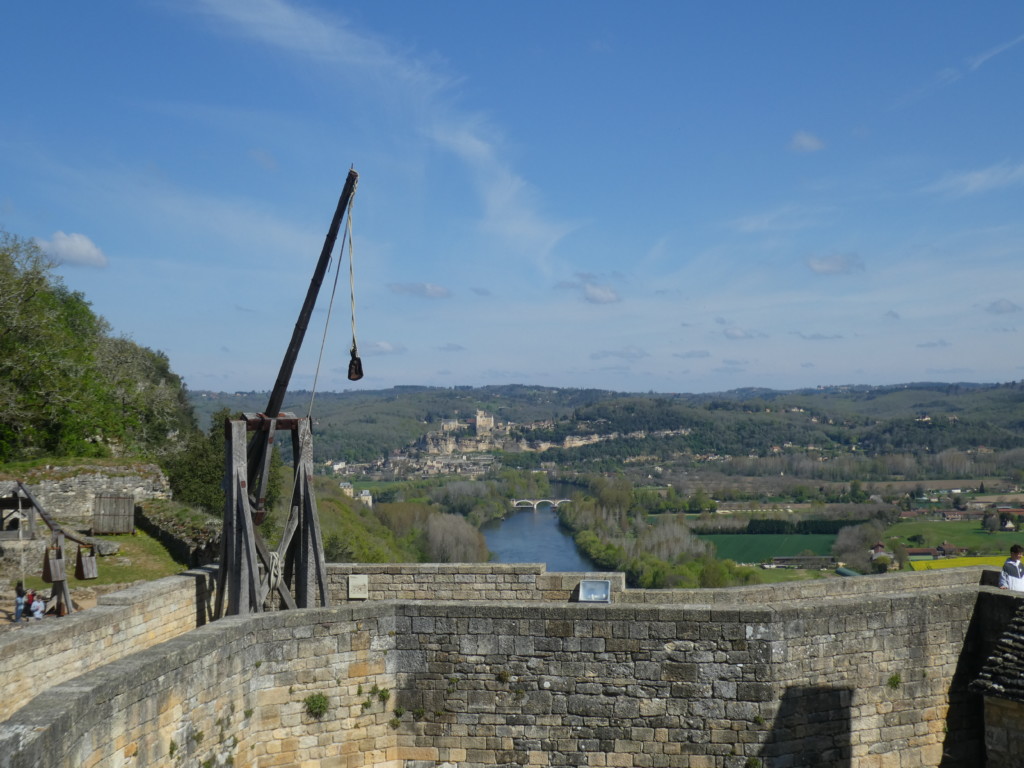
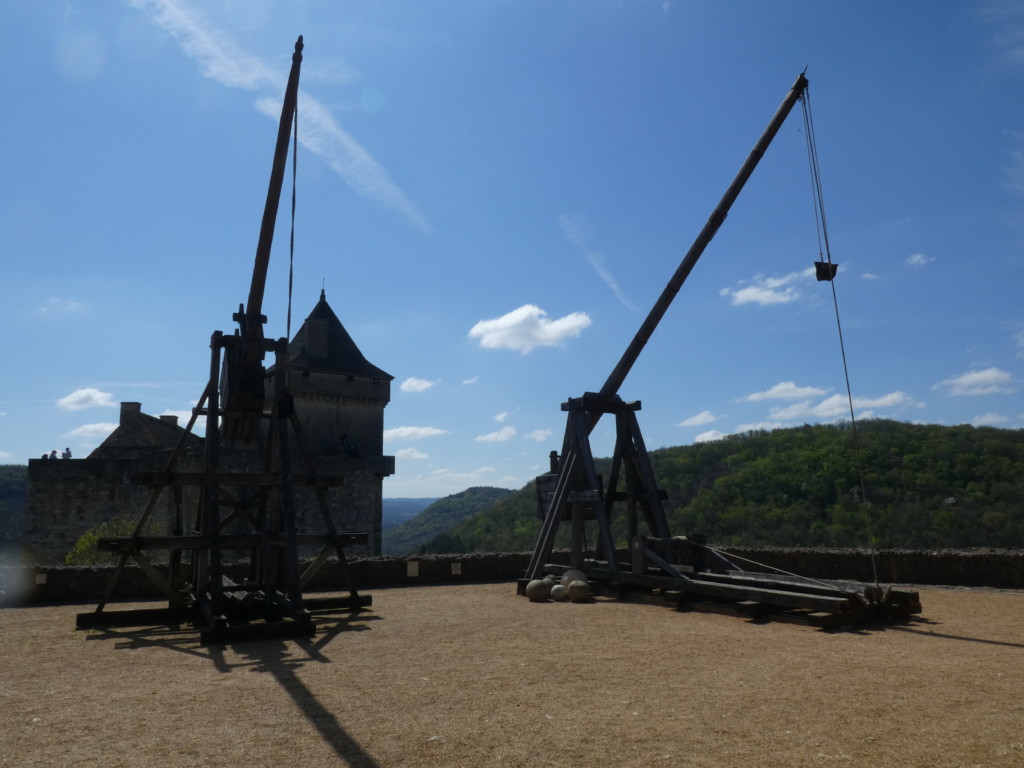
Le Chateau de Castelnaud | Castelnaud Dordogne
In the southern part of France, the Chateau de Castelnaud, the most frequented chateau, stands tall, gracing the quaint village of Castelnaud-la-Chapelle. Perched on the left bank of the Dordogne River, it offers a picturesque view of the milieu. The grand English castle, dating back to the middle-ages, guarded the pivotal junction of the Dordogne and the Céou rivers. Its position is directly opposite the Beynac, a rival French Castle, which adds to its strategic importance during historical times. There is something genuinely magical about this castle, as it seems to embody the power to take its onlookers on an extraordinary journey back in time. It’s an experience that embraces antiquity and magnificence, one that is worth visiting.
Chateau de Castelnaud, with its rich historical heritage, is a testament to the turbulent past of the region. This grand English castle was constructed in the 13th century during the Albigensian Crusade. Its strategic location served to guard the confluence of the Dordogne and the Céou rivers, which were vital trade routes of that era.
In the course of its history, it was involved in several wars and conflicts, including the Hundred Years War between the English and the French. The castle frequently changed hands between these warring factions, each time being reconstructed, refortified, and repurposed according to the strategies and architectural styles of the times. In fact, the rivalry between the Chateau de Castelnaud and the French castle, Beynac, situated directly across the river, was a distinguishing feature of the region during the middle ages.
In the 17th century, after a period of relative peace, the castle was abandoned and fell into a state of disrepair. It wasn’t until the 20th century that it was lovingly restored and opened to the public as a museum of medieval warfare. Today, it houses a collection of medieval weapons and armors, catapults, and other siege engines, carefully curated to showcase the castle’s strategic importance in the region’s history. Visitors to the Chateau de Castelnaud can expect an immersive and insightful journey into the castle’s captivating past.
Read more about Chateau de Castelnaud | Chateau Castelnaud in the Dordogne France
Chateau de Beynac | Beynac Dordogne
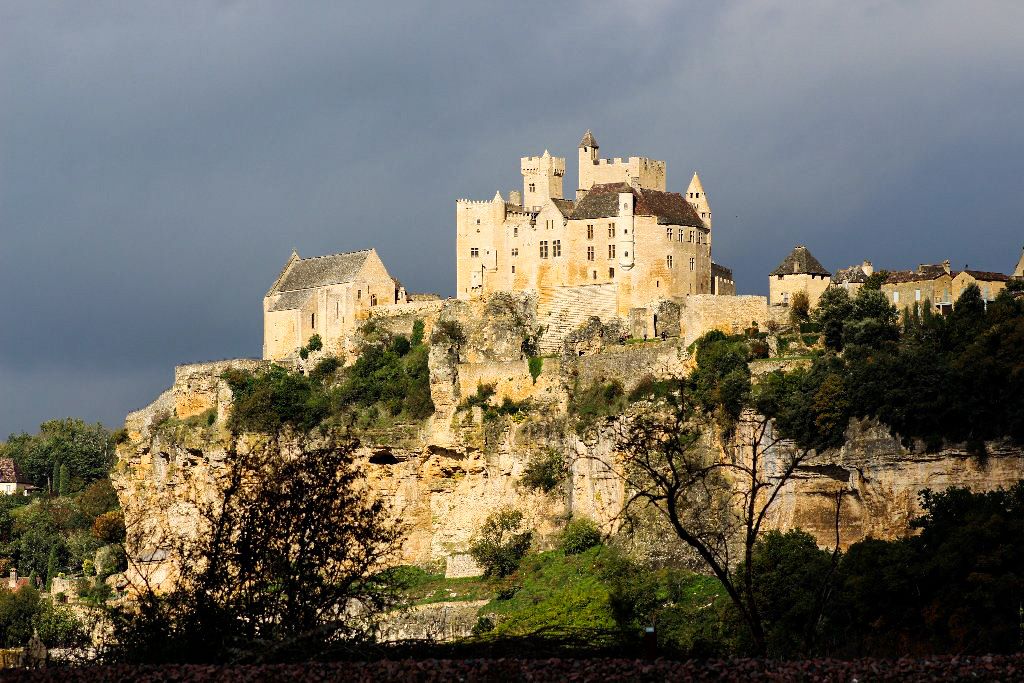
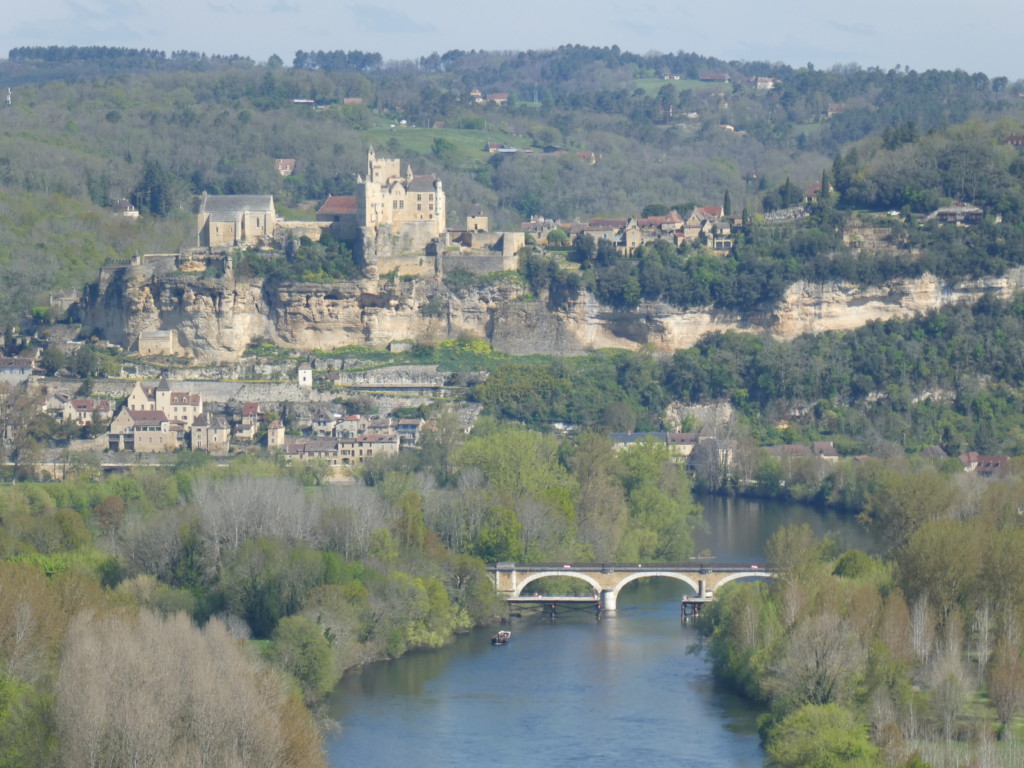
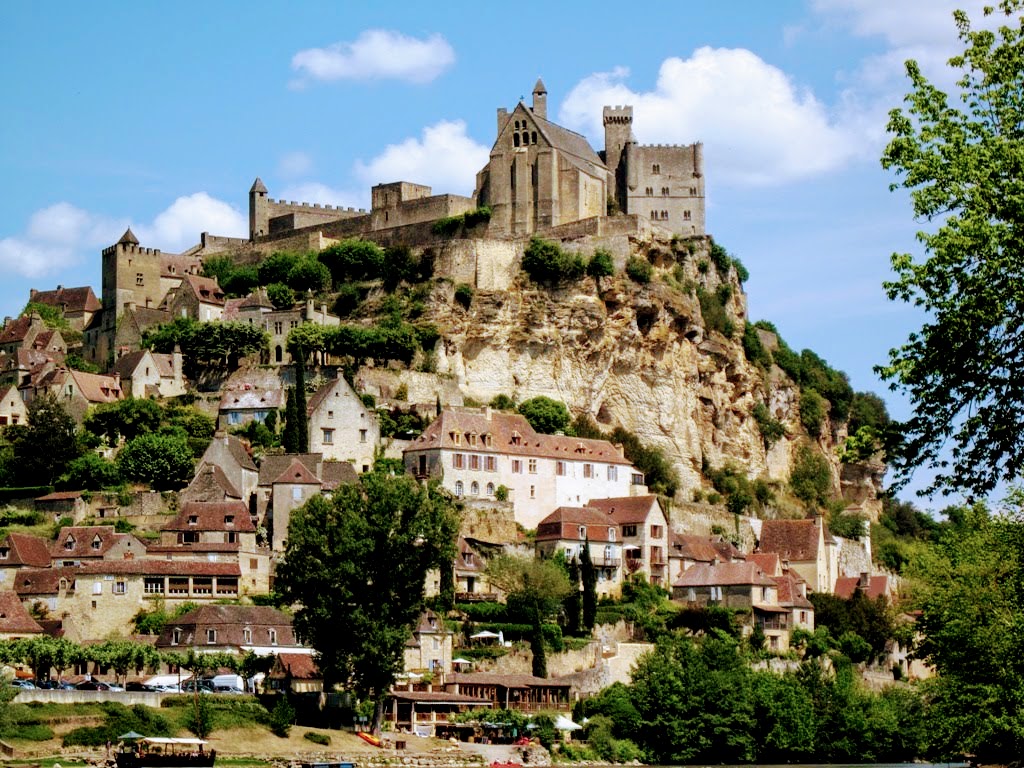
Chateau de Beynac | Beynac Dordogne
Located in Beynac et Cazenac, Dordogne, the Chateau de Beynac is truly a sight to behold with a history that is just as impressive as its structure. This stunning chateau, which doubles as a castle, has seen several rounds of destruction and reconstruction throughout its long existence. Intriguingly, it showcases architectural features from diverse timelines, including the presence of exceptional 15th-century frescoes which will mesmerize any art or history lover.
During the turbulent years of the 100 Years War, the Chateau de Beynac stood as a French bulwark, defending its territory against the English located across the river in Chateau Castelnaud. As such, this majestic castle did not merely serve as a residence but also played a pivotal role in the historical war, signifying its military importance at the time.
In addition to its military significance during the 100 Years War, the Chateau de Beynac has connections to other important historical figures and events. The castle was once owned by the influential Beynac family in the 12th century. Richard the Lionheart, the King of England, also resided at the chateau briefly during his reign, further enhancing its strategic worth.
Over the centuries, the Chateau de Beynac has undergone numerous transformations. One major change occurred in the 16th century with the introduction of Renaissance architecture in response to the social and cultural shifts of the period. Among the notable changes at this time were the addition of a grand gallery and an elaborate interior courtyard.
In the 19th century, the castle faced neglect and decay but was eventually saved by its new owner, Lucien Grosso. He undertook extensive restoration efforts, preserving the chateau’s magnificent structure as well as its historical artwork, including the aforementioned frescoes.
Today, as a testament to its rich and varied history, the Chateau de Beynac is open to the public for tours. Visitors can explore its ancient rooms, marvel at the breathtaking views of the Dordogne River, and immerse themselves in the fascinating details of its storied past.
Read more about Chateau de Beynac | Chateau Beynac in the Dordogne France
Les Chateau Milandes | Dordogne
In 1489, François de Caumont, Lord of Castelnaud, constructed Les Chateau Milandes in the Dordogne region at the behest of his wife, Claude de Cardaillac, who desired a more comfortable residence than the feudal Castle of Castelnaud. Retaining various architectural elements from the Middle Ages, such as turrets, newel staircases, and gargoyles, the castle offered a unique charm. Despite being lived in throughout the 19th century, the maintenance of the castle dwindled, eventually leading to a devastating fire.
However, between 1900 and 1908, wealthy industrialist Charles de Claverie took it upon himself to significantly restore Les Milandes. Later, in 1947, the famous Josephine Baker purchased the castle and revamped its interior, adding modern comforts like central heating, running water, and electricity. Unfortunately, her extravagant spending resulted in bankruptcy, forcing the sale of the castle in 1968 at just a fraction of its worth. Despite its turbulent history, the chateau’s gardens remain stunning and are absolutely worth visiting.
Chateau Monfort | Dordogne
This castle is privately owned and not open to the public.
Chateau Fayac | Dordogne
This castle is privately owned and not open to the public.
Other Chateaux and Castles of Interest
Le Chateau de Commarque | Les Eyzies Dordogne
Le Chateau de Commarque, located in Les Eyzies Dordogne, originated in the 12th century under the direction of the Abbots of Sarlat. Initially, the fortress was nothing more than a wooden tower with a mission to thwart the aspirations of the Beynac family and safeguard the valley.
Its strategic position at the crossroads of two major trade routes – one leading from Périgueux to Cahors and the other from Brive-la-Gaillarde to Bergerac – added to its significance. During the Hundred Years’ War, the castle fell under the control of the English, who remained in power for many years.
In the subsequent French Wars of Religion, the castle was seized by the Catholics, considering that the Beynacs were strong supporters of the Protestant cause. Since 1994, the castle is in the process of restoration.
The French Ministry of Culture recognized the castle as a ‘Monument Historique’ in 1943. Interestingly, beneath the castle lies a prehistoric cave that adds to its historical depth and intrigue.
It was only in the 1970s when the author and then-owner Hubert de Commarque initiated a comprehensive archaeological examination of the site that its invaluable historical importance was reestablished. The extensive studies and restorations embarked on by him unravelled medieval frescoes and other significant artifacts, embodying the rich cultural heritage of the region.
The prehistoric cave beneath the castle, known for its mysterious etchings, further enhances the site’s allure. Discovered only in the 20th century, these caves house an array of prehistoric engravings dating back to the Upper Paleolithic period, indicating that the site was inhabited long before the castle was erected.
As a recognized ‘Monument Historique’, Le Chateau de Commarque holds an irreplaceable spot in French cultural heritage. Its diverse and storied history, along with its ongoing restoration, continue to draw visitors from around the world, eager to explore this historical and architectural gem nestled in the heart of the Dordogne valley.
The address of Le Chateau de Commarque is 24620 Les Eyzies, France.
Chateau Bourdeilles | Brantome Dordogne
Jacquet Montbron was the wife of André de Bourdeilles, lord of the Château de Bourdeilles in France. She played a significant role in the design and construction of the château during the late 15th and early 16th centuries. Jacquet Montbron’s influence can be seen throughout the château’s architecture and decorative elements, showcasing a blend of Gothic and early Renaissance styles.
Chateau de Hautefort | Hautefort Dordogne
was originally built in the early Middle Ages as a defensive fortress. Through extensive modifications in the 17th century, it was transformed into a luxurious residence under the stewardship of the Marquis de Hautefort. It served as a powerful symbol of social and political prestige.
During its long history, Chateau de Hautefort has witnessed significant historical events. In the tumultuous period of the Revolutions, the castle suffered extensive damage but was remarkably restored in the 19th century by Baron and Baroness de Bastard.
The Chateau de Hautefort also played a crucial role during the Second World War. It provided a safe haven for valuable artwork and people fleeing from German-occupied territories. Despite being devastated by a fire in 1968, the castle has been painstakingly restored once again. Today, it continues to enchant visitors with its harmonious architecture, fascinating history, and artistic treasures.
The gardens at Chateau de Hautefort, with their distinctly French formal design, tell an intriguing story of their own. Initially laid out in the 17th century under the careful guidance of the Marquise de Hautefort, they’ve undergone a journey of transformation that mirrors the estate’s turbulent history.
The impressive parterres, decorative pools, and elegant fountains you see today were designed with inspiration from the structured garden spaces that were synonymous with the French Renaissance. The emphasis on symmetry and balance is a testimony to the popular geometric aesthetic of the era.
The English-style park, on the other hand, was an addition from the 19th century, a period when English landscape gardens were gaining popularity in France. This park was designed with a more naturalistic approach, characterized by its meandering pathways, vast expanses of lawn, and ancient trees. It represents a shift in horticultural taste from the formality of the Renaissance garden to a style celebrating nature’s own calculated randomness.
Through periods of prosperity and upheaval, these gardens have stood the test of time. Unfortunately, they were almost obliterated in a devastating fire in the 20th century. However, Baronnesse de Bastard, the last private owner of the estate, was relentless in her efforts to restore the gardens to their former glory. Today, they serve not only as a testament to her dedication but also as a tangible link to the past.
It’s this harmonious marriage of history and horticulture that adds another layer of interest to the experience of visiting Chateau de Hautefort. The gardens present an opportunity for visitors to immerse themselves in a rich tapestry of European garden design styles spanning several centuries.
Read more about Chateau de Hautefort | Chateau Hautefort in the Dordogne
Chateau de Fenelon | Sainte Mondane (between Sarlat and Souillac) Dordogne
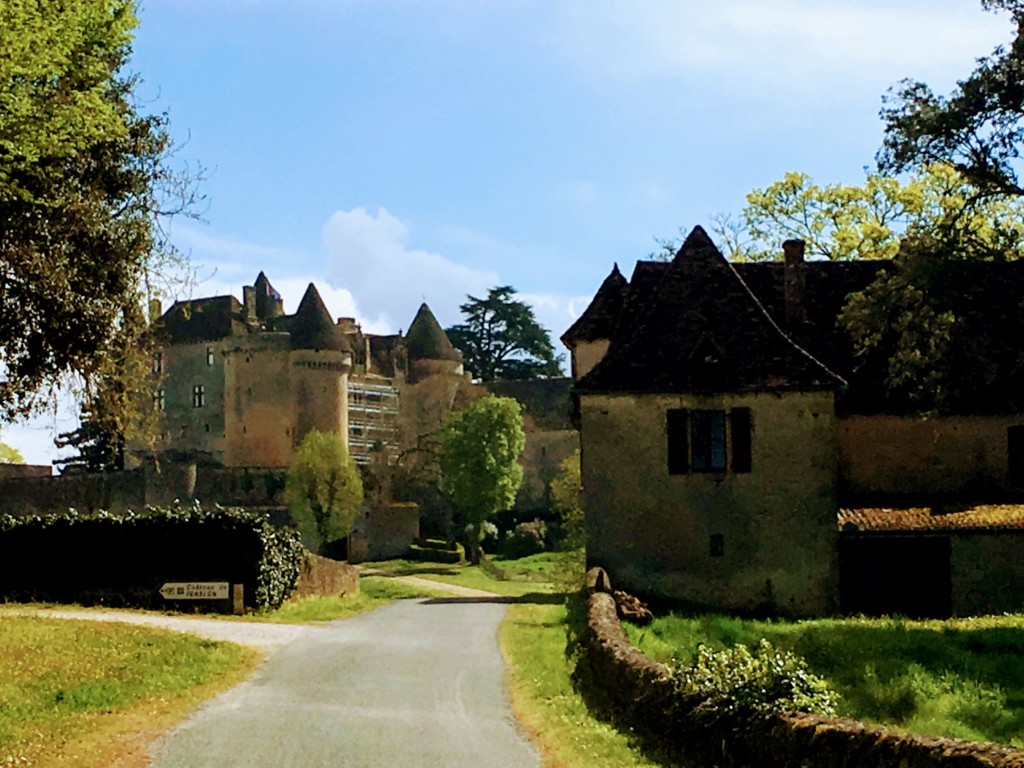
Chateau Fenelon | Dordogne
The history of Chateau de Fenelon is every bit as intriguing as the magnificent structure itself. Nestled above the quaint village of Saint Mondane, this castle speaks volumes about the architectural brilliance, heritage, and cultural nuances of various historical periods. The earliest references of the chateau trace back to the Middle Ages, around the 13th century, but its existing structure was primarily constructed in the late 16th and 17th centuries.
The castle is perhaps best known as the ancestral home of Francois de Salignac de la Mothe-Fénelon, more commonly simply known as Fenelon, an esteemed French Catholic archbishop, theologian, and writer during the 17th-18th century. His writings and philosophies particularly invited the attention of Louis XIV’s court.
Despite several changes in ownership and even a brief period of abandonment during the French Revolution, Chateau de Fenelon maintains its original charm. It has been restored responsibly with an eye to preserving the history and original craftsmanship. Today, visitors from around the world come to marvel at its architectural majesty, explore its fascinating matrix of historic relics and delve into the lives of its former inhabitants. Over the centuries, each addition and modification has only added to the chateau’s grandeur, honouring its legacy, whilst telling its own time-specific tale.
Chateau Biron | Dordogne
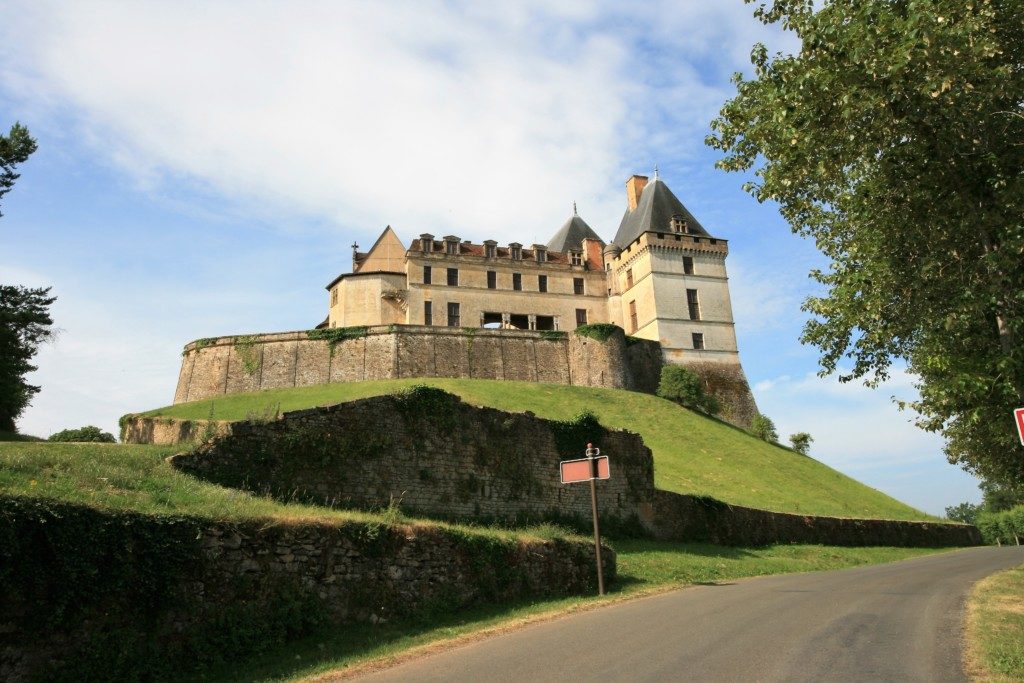
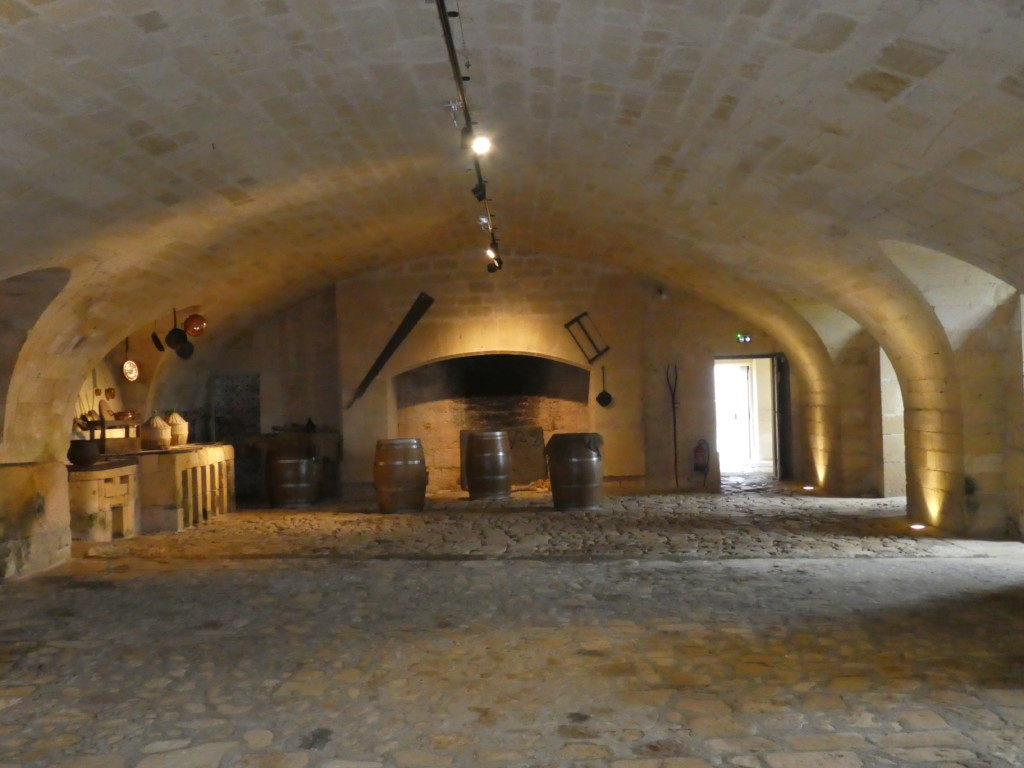
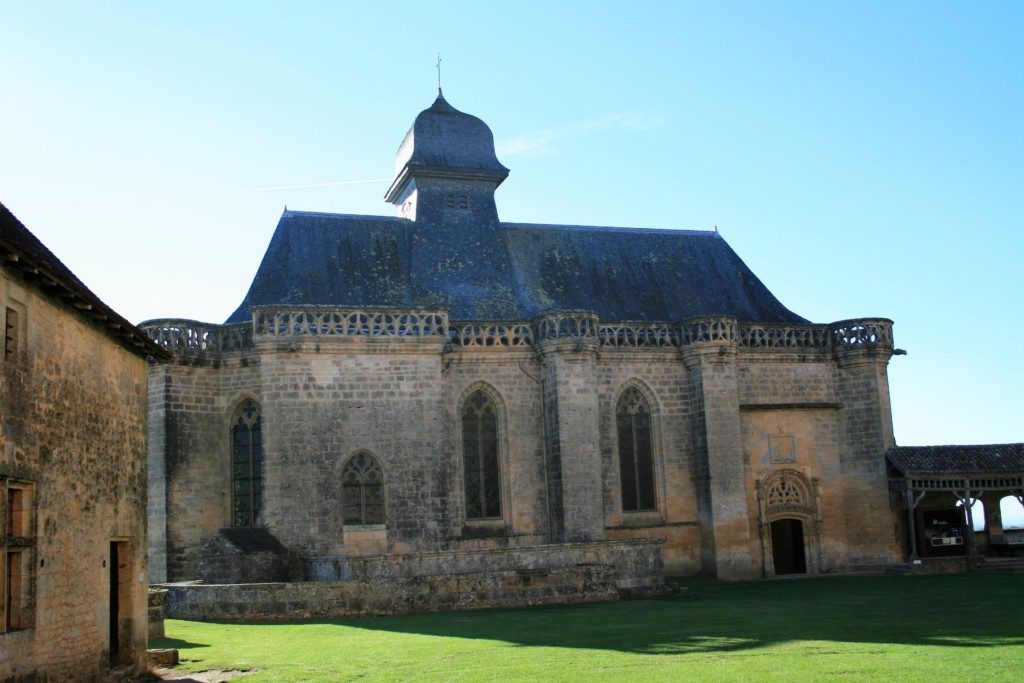
Chateau Biron | Dordogne
During the 14th and 15th centuries, Chateau Biron played a significant role in the Hundred Years’ War between England and France, changing hands multiple times. After the war, the castle was expanded and embellished, resulting in the outstanding architectural diversity visible today. These enhancements include Renaissance-styled additions, and a mix of Gothic and Romanesque elements.
In the 16th century, the castle served as the headquarters for the Huguenots, a Protestant group resisting the Catholic king during the French Wars of Religion. The vibrant cultural life of Chateau Biron during this time attracted philosophers, poets, and artists, making it a hub for intellectual exchange.
In 1793, during the French Revolution, the castle was temporarily seized by the state but eventually returned to the original family. The family continued to live in the castle until the early 20th century, when the gambling debts of the last Baron of Biron resulted in its loss. Since then, the castle has undergone various restoration projects to preserve its beauty and historical significance. Today, visitors can explore Chateau Biron’s unique architecture, artistic treasures, and enjoy the stunning panoramic views of the surrounding countryside.
Chateau de Jumilhac | Thiviers in the Dordogne
Chateau de Jumilhac has a rich history, dating back to the 12th century. Initially built as a fortress, it served as an essential defense line in the region. Over the centuries, the castle underwent numerous modifications, with each new owner leaving their mark on the architecture. The majestic appearance of the castle today is primarily due to the renovations carried out in the 17th century by the Marquis de Jumilhac.
One of the castle’s fascinating historical aspects is its connection to the pursuit of alchemy. The Marquis de Jumilhac, a renowned alchemist, designed the rooftop decorations to symbolize the stages of alchemical transformation. This unique feature adds an air of mystery to the castle’s already distinct charm.
The Chateau de Jumilhac now serves as a tourist attraction and a venue for various cultural events, such as art exhibitions, concerts, and even medieval festivals. Visitors can explore the splendidly decorated rooms, stroll through the lovely French-style gardens, and take in the breathtaking views of the surrounding countryside. The castle’s romantic rooftops and rich history make it a must-visit destination for anyone touring the Dordogne region.
Read more about Chateau de Jumilhac Chateau Jumilhac in the Dordogne
Chateau de Montreal | Isaac.
Chateau de Montreal, a captivating estate, is immensely rich in history and heritage. Owned by Isaac, this splendid property is situated in a picturesque environment that radiates beauty and elegance. Its origins can be traced back to the 1800s, instilled with an air of quaint antiquity, and bearing witness to many historical events.
The Chateau de Montreal is unique in its design and structure. The chateau’s intimate ambiance is coupled with expert craftsmanship, featuring beautifully designed gardens that are integral to the estate’s charm. The carefully planned layout of the gardens provides a blend of natural beauty and structured design, offering an enchanting space to wander and connect with nature.
Over the years, this grand estate has been conscientiously preserved, maintaining its historical significance and beauty. It continues to welcome visitors from near and far, inviting them to explore the grounds, wander through the elegant gardens, and appreciate the detail of the intimate chateau.
In conclusion, Chateau de Montreal, under the stewardship of Isaac, remains a symbol of elegance, showcasing its historical charm and aesthetic beauty, making it a must-visit for those keen to step back in time and submerge in its rich history.
Dordogne Chateaux | Dordogne Attractions | Dordogne Gardens | Dordogne Markets | Dordogne Beautiful Villages | Dordogne See And Do